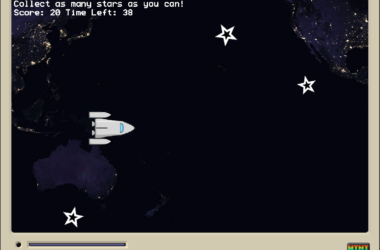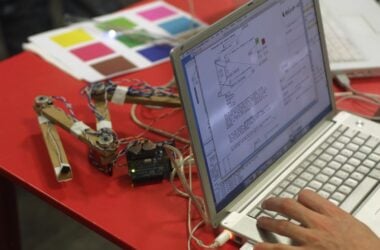What’s a lateral thinking puzzle? It’s a puzzle which often makes no sense until you use problem solving skills to find the answer. And the answer often is unexpected. It makes sense once you figure out the answer. These puzzles sometimes are called situation puzzle because the situation described in the puzzle leads to the answer.
These puzzles are great ways to practice your problem solving skills. Plus they’re often fun because they make no sense.
What is a Lateral Thinking Puzzle?
Here is a somewhat easy example of a lateral thinking puzzle:
What is an ancient invention people use today to see through walls?
Assuming you don’t know the answer immediately, how do you solve this puzzle? Start with a look at the words: ancient, invention, today, people, see through walls.
Also consider the logic of the question, which always is designed to lead you astray. We don’t use many ancient inventions today, do we? Fred Flinstone didn’t drive a car with a gas combustion engine, did he?
The solution likely is in the words “see through walls.” Think about a building wall. What do we find on walls?
We find doors, windows, maybe a house light on a wall. House lights might be an ancient invention if you count torches as lighting. But doors and windows definitely were used thousands of years ago. Doors, however, only let you see through a wall if they’re open. Windows let you see through a wall all the time.
Unless it’s a traditional window on a yurt in which case you must lift the flap over the window.
Examples of Lateral Thinking Puzzles
Here are a few more examples of these puzzles, with a short explanation of the answer. See if you can figure out the answer before you read the answer.
What’s a five letter word that becomes shorter when you add two letters to it?
The answer is in the question, in plain sight. Look first for key words: five letter word, becomes, shorter, add two letters. There are lots of programming problems, and problems in general, where the solution is in the statement of the problem.
How well you state the problem determines how easy or hard the problem is to solve.
In this case, begin by looking at the key words to see if they have the answer. shorter is the only word that jumps out to me. Count how many letters are in this word. It’s seven. If we’re looking for a five letter word that becomes shorter when we add two letters, then we’re looking for a seven letter word, correct?
What happens if we remove the last two letters of the seven letter word, shorter? We get short, don’t we? That’s a five letter word. That’s the answer.
Here’s another perhaps more fun example of a lateral thinking puzzle:
What word is always spelled incorrectly?
The solution is to avoid the urge to start thinking of words to meet the criteria: words people spell incorrectly. Instead, stop and think about all the words you know spelled with the letters in the order used by the word incorrectly. There are none, right?
In fact, there’s only one word spelled with the letters in the order used by this word. It’s incorrectly. The solution is to answer the question literally.
And here’s a lateral thinking puzzle which requires more thought to solve:
What is the next letter in this sequence: J F M A M J?
To solve this problem, you must first speak English. You might think the second J is the start of a pattern, in this case, J F M A M. Therefore, the next letter in the sequence would be F followed by M, A, and M: J F M A M J F M A M. But you’d be wrong.
Think about the sequence J F M A M J. What might each letter represent if they were the first letter of a word? Think about things you use from time to time where these letters are the first letters of words.
We all have used calendars, for example. Calendars have twelve months: January, February, March, April, May, June, July, August, September, October, November, and December. Do you see the pattern?
January, February, March, April, May, June
J F M A M J
The next letter would be J, for July, then A, for August. Therefore, the answer to this puzzle is J.
Hopefully, you can see how lateral thinking puzzles are great ways to have a little fun and practice your problem solving skills. There are a number of these puzzles online. And they’re easy to adapt and create.
If you’re a teacher, for example, these puzzles might work great as a way to let students ask questions and work together to find the answer. They are useful ways to teach and practice how to solve problems.
Learn More
Lateral Thinking Puzzles (Situation Puzzles)
http://en.wikipedia.org/wiki/Situation_puzzle
Paul Sloane’s list of Classic Lateral Thinking Puzzles with Answers
http://www.techinterviewpuzzles.com/2010/06/paul-sloanes-list-of-classic-lateral.html
Examples of Lateral Thinking Puzzles
http://www.puzzlesandriddles.com/LateralThinking.html
http://www.kent.ac.uk/careers/sk/puzzles.htm
http://www.folj.com/lateral/










